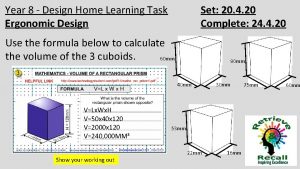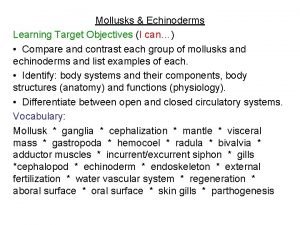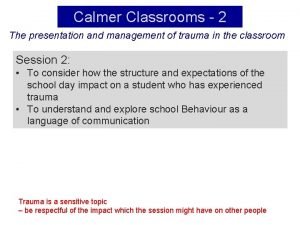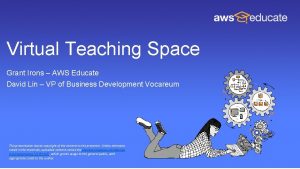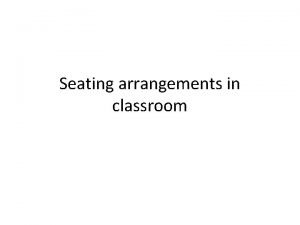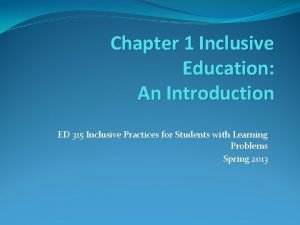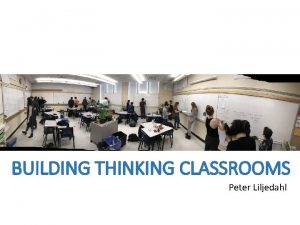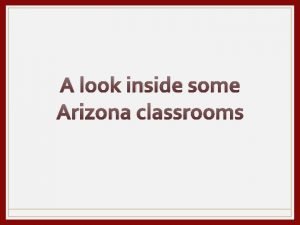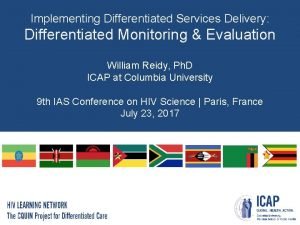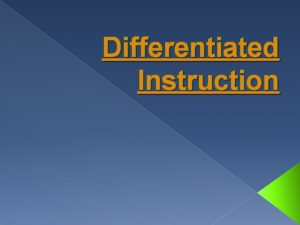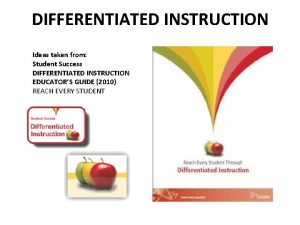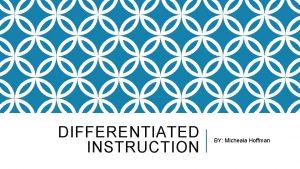A LOOK INSIDE SOME DIFFERENTIATED CLASSROOMS Chapter 5












- Slides: 12

A LOOK INSIDE SOME DIFFERENTIATED CLASSROOMS Chapter 5

There is no recipe for differentiation All that is needed is: A conviction that students differ in their learning needs And A belief that classrooms in which students are active learners, decision makers, and problem solvers are more natural and effective than those in which students are passive recipients of information

Ms. Eames and her 1 st Graders • Flexible reading program is used to address differences in readiness and interests Students are scheduled in several different configurations where students are doing one or more of the following: Whole group reading Listen to a story and discuss- or volunteer to read Small group with teacher to skill build or share ideas Meet with peers to read on a topic of mutual interest Read alone Meet with a peer with stronger reading skills Choral Read

Ms. Eames uses this arrangement to: v. Target particular teaching needs v. Provide for interest-based explorations v. Have students share skills and interests with other classmates v. Work with the class as a whole

Mrs. Riley and her 3 rd Graders Learning and interest centers are used to allow choice for students Based on formal and informal assessment, she may assign center work, or allow for student choice in participating in the center or the product. Flexible scheduling is also used so more students can access the centers

Mrs. Riley uses centers to v. Allow students to make choices about their work in ways that address their interests and learning preferences

Mr. Blackstone and his 6 th Graders Uses whole group instruction to introduce a unit in science. Then, to extend the learning, he assigns labs based on which lab is most appropriate for the student He makes observations over time and works with small groups both as a remediation and advanced studies.

Mr. Blackstone uses this to v. Get to know his students and how they think by working with them directly

Ms. Jeffries and her 8 th Grade History students Uses investigative projects based on individual choice, then assigns students to groups by their topics and strengths Flexible grouping allows her to tailor projects for more advanced students or for students who need more sturcture

Ms. Jeffries uses this to v. Provide “custom-fit” responsibilities as well as vague components that the group must work out v. Allow every student to have an opportunity to make a clear, individual contribution to the whole that is challenging and interesting v. Improve student negotiation skills and group work skills

Mr. Rakes and his high school math students Uses “compacting out” of whole group instruction. He provides a pretest – based on pretest success, students opt out of regular classroom instruction to investigate topics more in depth. Students who “compact out” work independently, but are required to take the end-of-chapter tests. Students who do not “compact out” are arranged into cooperative learning groups to facilitate the mixed ability grouping

Mr. Rakes uses this method to • Be able to work with struggling students who have missing concepts or skills
 Look up look down look left look right
Look up look down look left look right Learning task 2 look for a health product at home
Learning task 2 look for a health product at home Look inside you and be strong
Look inside you and be strong 5 parts of large intestine
5 parts of large intestine Clam
Clam Let's look inside
Let's look inside Inside of water tower
Inside of water tower Calmer classroom
Calmer classroom Aws educate vocareum
Aws educate vocareum Classroom arrangements
Classroom arrangements Global classroom position paper
Global classroom position paper Inclusive chapter 1
Inclusive chapter 1 Thinking classroom peter liljedahl
Thinking classroom peter liljedahl

